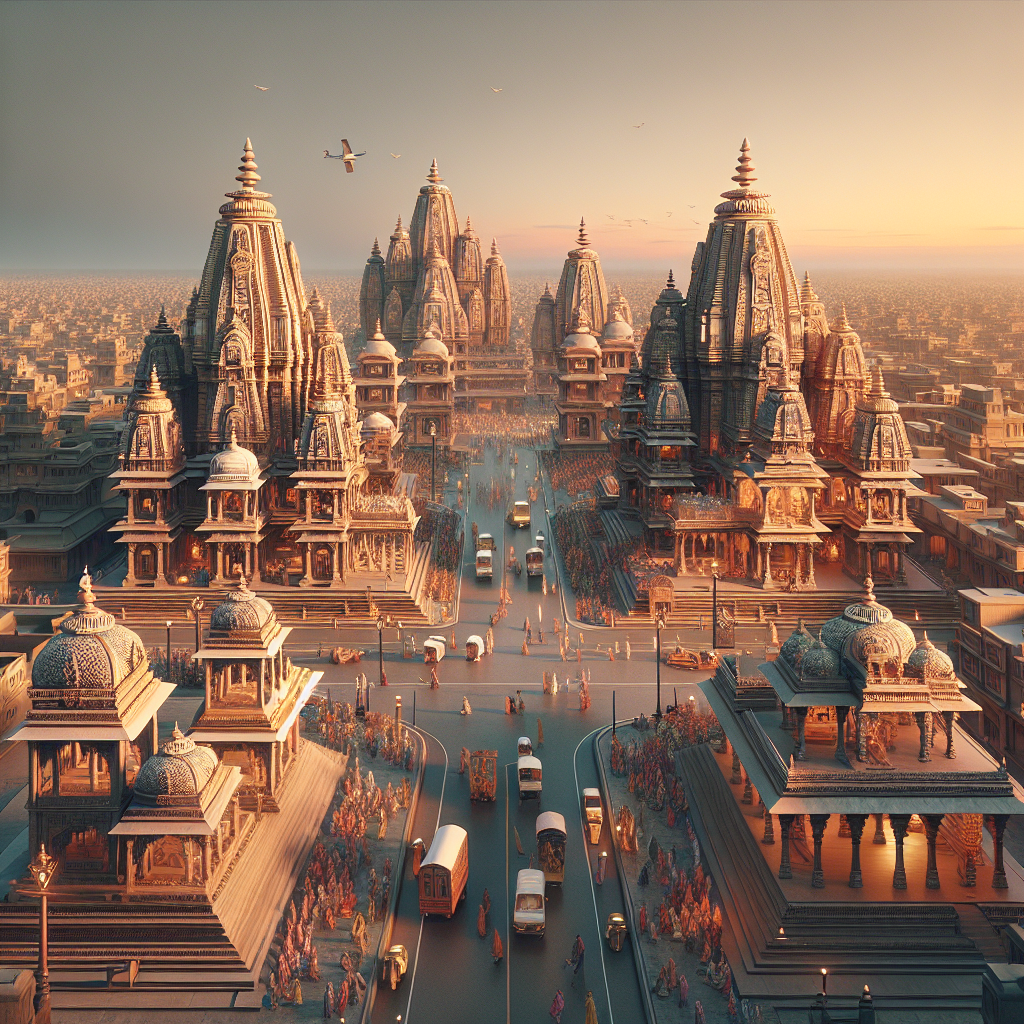Prayagraj, formerly known as Allahabad, is a historic city in the northern Indian state of Uttar Pradesh. Renowned for its rich cultural heritage and spiritual significance, Prayagraj stands at the confluence of three sacred rivers: the Ganges, Yamuna, and the mythological Saraswati. This unique geographical location makes it a prominent pilgrimage site, attracting millions of devotees and tourists each year. The city is replete with magnificent temples and landmarks that showcase a blend of ancient and modern art and architectural styles, making it a must-visit destination for anyone interested in India’s diverse cultural tapestry.
The Historical Significance of Prayagraj
Prayagraj is believed to be one of the oldest cities in India, with references dating back to ancient texts like the Rigveda and the Mahabharata. Its historical significance is deeply rooted in Hindu mythology, particularly as the site of the Kumbh Mela, which occurs every 12 years and is one of the largest religious gatherings in the world. The architectural marvels found here reflect centuries of devotion, artistry, and the spiritual aspirations of its people.
Temples of Prayagraj
1. Triveni Sangam
While not a temple in the conventional sense, Triveni Sangam is the sacred confluence of the three rivers and holds immense religious significance. Pilgrims gather here for ritual baths, believing that this act purifies the soul and washes away sins. The serene ghats along the banks are lined with temples, a picturesque setting that epitomizes the spiritual essence of Prayagraj.
2. Kashi Vishwanath Temple
Dedicated to Lord Shiva, the Kashi Vishwanath Temple is one of the most revered shrines in India. The temple’s architecture showcases a blend of modern and ancient design elements, with its gold-plated dome rising majestically against the backdrop of the city. Visitors are captivated by the beautifully sculpted walls and the intricate designs that reflect the artistry of the era it was built in.
3. Hanuman Mandir
Nestled near the banks of the Yamuna, the Hanuman Mandir is a prominent spiritual hub. It stands out for its unique black stone idol of Lord Hanuman, one of the most beloved deities in Hinduism. The temple’s architecture incorporates traditional design motifs, with ornate carvings and vibrant wall paintings depicting scenes from Hindu mythology. Devotees flock here for blessings and to pay homage to the revered deity.
4. Anand Bhawan
While primarily a museum and the ancestral home of the Nehru-Gandhi family, Anand Bhawan also holds significant historical and architectural value. The building showcases various architectural styles, reflecting the changes that India underwent during colonial rule. Visitors can explore the rich history of India’s freedom struggle through the artifacts and memorabilia housed within its walls.
Architectural Landmarks
1. All Saints Cathedral
A remarkable example of Gothic architecture in India, All Saints Cathedral is a prominent landmark in Prayagraj. Built during the British colonial era, the cathedral features tall spires, intricate stained glass windows, and arched doorways that transport visitors back to a time of grand colonial design. The serene ambiance of the cathedral provides a stark contrast to the bustling city, making it a peaceful retreat for visitors.
2. Sadar Bazaar and the Colonial Buildings
The heart of Prayagraj, Sadar Bazaar is not only a vibrant market hub but also home to several colonial-era buildings that reflect the architectural aesthetics of the time. The Minto Park, designated to commemorate Lord Minto, and other government buildings in the vicinity exhibit classic British colonial architecture, characterized by their imposing structures and lush lawns.
Cultural Significance
Beyond the brick and mortar, the art and architecture of Prayagraj embody the city’s spiritual legacy. The intricate carvings, the craftsmanship of artisans, and the vibrant colors of the temples all contribute to the rich narrative of devotion and identity. Furthermore, the city serves as a living canvas for various cultural practices, festivals, and rituals, from the daily aarti (ritual worship) to the grand celebrations during Kumbh Mela, adding to the enchanting allure that Prayagraj holds for visitors.
Conclusion
Prayagraj, with its magnificent temples and iconic landmarks, is a testament to India’s rich cultural heritage and spiritual depth. The art and architecture of the city not only serve as a reminder of its glorious past but also as a living testament to the continued significance of faith and spirituality in the lives of its people. As visitors explore these sacred spaces, they are not merely observing architectural wonders; they are engaging with a profound legacy that continues to shape the collective consciousness of India. Whether you are a history buff, an art enthusiast, or a spiritual seeker, Prayagraj has something to offer for everyone, making it an unforgettable part of India’s vast mosaic.

